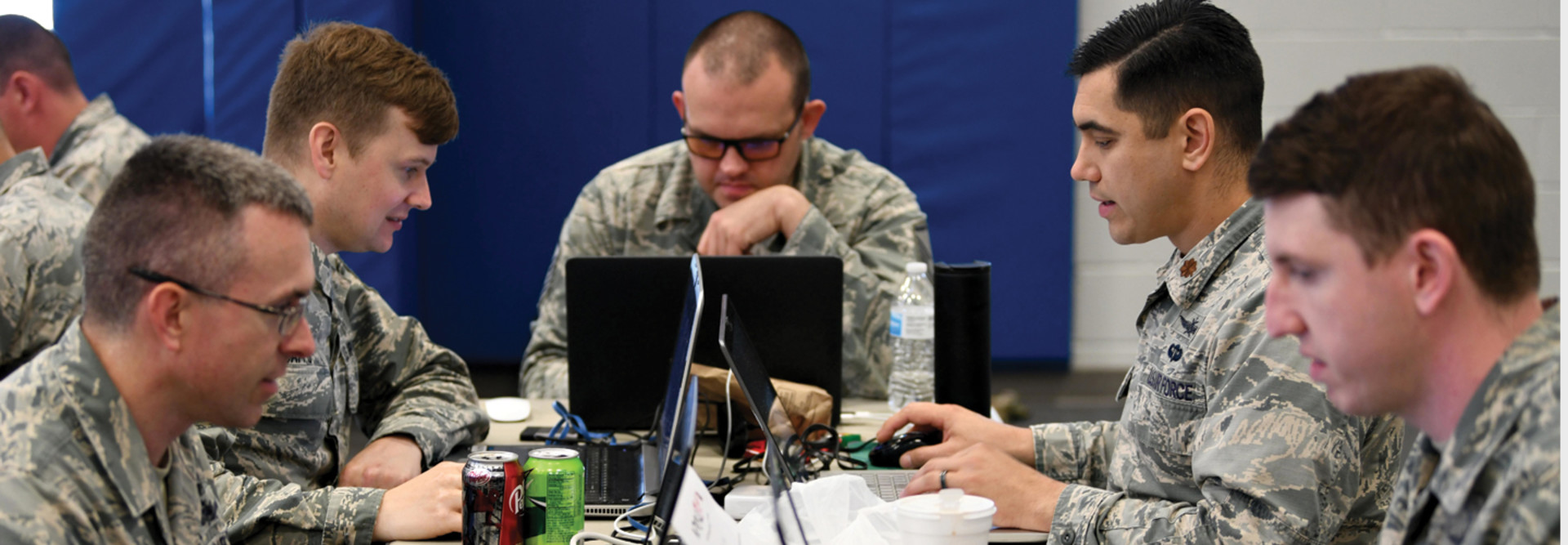Air Force to Shift to ‘Network-Centric’ Operations
The strength of a nation’s air force used to be measured in how many planes it had, and their sophistication, range, and weapons. Now, Air Force leaders say, it’s measured in how quickly airmen can access data and information in applications.
The Air Force is touting its recently released digital strategy document, “The Digital Air Force” as a blueprint for transforming the service’s operations to meet the information demands of the 21st century.
Specifically, the strategy calls for the Air Force to:
- Field a 21st-century IT infrastructure responsive to the demands of modern combat.
- Leverage the power of data as the foundation of artificial intelligence and machine learning to enable faster decision-making and improved war fighter support.
- Adopt agile business practices that improve the effectiveness and efficiency of its management enterprise.
Essentially, the plan calls for the service to shift its focus from weapons platforms and toward connectivity — and the ability to share from and act on data more quickly than adversaries.
“Faced with the increased speed and scope of future war, the Air Force must move from platform-centric to network-centric operations,” the strategy says. “We must develop families of systems that fuse and share the ubiquitous data collected throughout the battlespace and rear echelons.”
MORE FROM FEDTECH: Find out if an enterprise IT as a service model is right for you.
What Is the Air Force’s Digital Strategy?
The digital strategy says that the Air Force’s warfighting and command and control systems must leverage data to “produce insights about adversary positions and intentions.”
Air Force commanders will use machine-learning algorithms and AI to quickly analyze potential courses of action and speed up decision-making to confuse and overwhelm adversaries.
“By correlating multi-spectral and multi-source data, we will find adversaries that try to hide in the ‘noise,’ helping us prosecute fleeting, mobile, or time sensitive targets with greater confidence and precision,” the document states.
“We’ve been very successful so far with the American military and the individual weapons platforms,” acting Air Force Secretary Matt Donovan told Federal News Network last month. “The problem is these exquisite capabilities are largely unconnected from each other. We need to get to a point where we have a family of systems and everything is connected for command and control. We are ultimately trying to get to a point where any sensor will provide information to any shooter.”
The Air Force knows that it is both frustrating to airmen and detrimental to national security to use slow and outmoded technology, especially when faster and more efficient IT is available.
“We want to make sure that when they sit down in front of their computer or whatever technology they’re working with that they have the most advanced, cutting edge technology,” Donovan told Federal News Network. “Our airmen who are coming in are digital natives. They have an expectation when they are coming in that their military lives in the Air Force should be comparable to the rest of their lives. We owe it to them so we can optimize their time.”
Secure and resilient networks sit at the heart of this strategy. Such networks “must possess distributed capabilities that are self-healing against the loss of individual nodes, allowing information to route through alternative paths to continue powering the air, space, and cyber effects demanded by combatant commanders,” the strategy document says.
The Air Force expects to use “industry-standard technology and systems to reduce overhead, gain efficiencies, and generate superior management outcomes in support of the warfighter.”
MORE FROM FEDTECH: Find out how edge computing benefits feds.
Cloud, AI Needed to Create a Modern Air Force
To do all of this, the Air Force says it must “synergize three interconnected and mutually supporting reform efforts: IT architecture, data management, and business operations reform.”
The Air Force notes that it is revamping its digital architecture and shifting to cloud-based solutions for storing and sharing data, “ensuring that all airmen have uninterrupted access to the data they need, where and when they need it.” Such systems will be both resilient and secure, “allowing data transmission in the most challenging electromagnetic environments.” The Air Force is also rethinking digital security and “driving new standards for system verification so we can connect new, innovative systems at the speed of relevance.”
The Air Force is also creating a new data management architecture and “standardized policies to support the free exchange of data between platforms.” The service will require that all data “is gathered, stored, and transmitted in commonly read and digested formats to minimize the delay between receiving, processing, and using information derived from multiple systems.”
The Air Force is also changing how it manages personnel and business systems by embracing an Enterprise IT as a Service model, farming out day-to-day IT operations to commercial providers so that cybersecurity professionals have “the freedom to focus on warfighter tasks and connecting information operations to our tactical and strategic ends.”
“We are changing how we recruit and train our personnel to operate these systems and manage an infrastructure designed for warfighting effect,” the strategy states. “Also, we are moving to rationalize, consolidate, and refine our business management systems and practices, merging requirements, activities, and systems where appropriate, and implementing plans that foster innovation, process improvement, and force development.”
Speaking last week at the Air Force Association’s Air, Space and Cyber Conference at National Harbor, Md., Air Force Chief of Staff Gen. David Goldfein recalled a recent visit to Silicon Valley, where he described himself to major tech companies as the “chief of staff of a garage startup,” FedScoop reports.
The Air Force needs to shift away from being a hardware-focused venture — supporting the development of planes, weapons systems and sensors — so that it can focus on software, Goldfein said.
“We’re a garage startup, and today we’re sort of a hardware company: platforms, sensors and weapons,” he said, according to FedScoop. “And I’m here because our future is in software. It ain’t going to be the device that wins. It’s going to be the app. And the questions for us is how do we build the highway to be able to work it?”
Donovan said the future of the Air Force will be based around connectivity and access to data “How do we develop the app that sits on the cloud that’s powered by AI that’s connected to the war fighter?” he said, FedScoop reports.
“The same technologies that are revolutionizing business and commerce, such as smartphones, cloud computing and artificial intelligence, are equally influencing the future of war,” he said.










